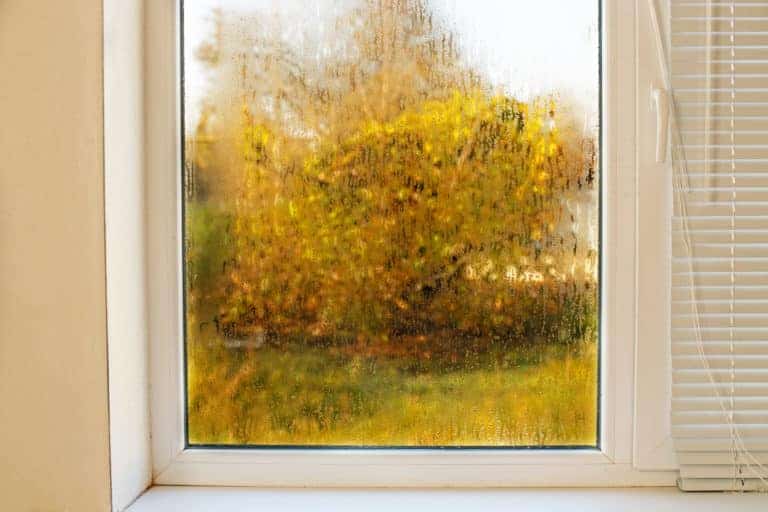You’ve rubbed your eyes and you’ve put your glasses on, but for some reason, the house across the street still looks fuzzy. There’s nothing wrong with your prescription, though; it’s the buildup of fog in your windows that’s impeding your vision.
Fog on the interior side of your window is easy enough to wipe away, but what about when that fog seems to be inside the window glass, just out of reach?
When home windows fog up, they become difficult to see through. On top of the less-than-ideal aesthetic aspect of foggy windows, they also may not insulate your home as well as their crystal clear window counterparts.
But don’t be so hasty to replace home windows if they are foggy. You may be able to opt for a repair instead, which could save you time and money. It may sound too good to be true, but the technology for non-invasive window defogging is out there.
If you’re wondering how to fix foggy windows, you’ll want to keep reading for all the nitty-gritty details.
The Anatomy of a Window
Before digging deeper into the cause of your fogged window, it’s crucial to understand how windows are built. Having a general knowledge of a window’s anatomy will be helpful throughout this article and beyond.
Most modern windows are actually two or more panes of glass put together. A dual-pane window (also called a double-glazed window) consists of two sheets of glass separated by a layer of hermetically sealed air. Triple pane windows employ the same technology, but with an additional layer of glass pane and air.
These pane windows are often referred to by industry professionals as Insulated Glass Units—IGUs, for short. By leaving space for air between multiple panes, window manufacturers can increase the amount of insulation.
The space between the panes of glass is typically filled with air, but there are also IGUs filled with other non-toxic gases, such as argon, krypton, and xenon. Gas-filled windows are becoming increasingly popular since they conduct less heat, improving the insulation of your home.
In addition to vacuum-sealed air or gas, the gap between the panes will have a desiccant to remove moisture from the space. If you’ve ever opened a new product and seen a little white package that says “do not eat,” you’ve handled a desiccant. The desiccant can only absorb so much moisture, which means it may stop working if it becomes oversaturated.
The whole IGU is installed in a home or business by sealing it with caulk and nailing in the frame. Insulated glass is designed not to fog up, but there are situations where fog can occur.
How Windows Become Foggy
When a window is “foggy,” what you’re actually seeing is moisture trapped between the panes of glass. If regular air enters the space where vacuum-sealed air or inert gases are used to live, moisture comes with it.
During the warmer months, the moisture in the air between the panes may not reach its dew point—the temperature at which it gets cold enough to condense into a liquid. But when conditions cool, moisture buildup can become a noticeable fog.
External air can enter between the panes of glass when a window seal fails. Window seals can fail in one of two ways:
- Damage to the seal – Sanding around a windowsill, pressure washing, or applying excessive force to the window can result in a damaged, broken seal.
- Degradation over time – As a house settles, pressure may be applied to the windows, leading to a slow degradation of the seal. Window seals also lose their effectiveness over the years, meaning a ten- to a twenty-year-old window can start to fog up without any signs of damage.
Whether it was caused by an accident or the slow advance of time, a foggy window is never ideal. Moisture buildup can be unsightly, and the loss of hermetically sealed air or gas between the glass means a reduction in insulation (also known as R-value).
This means it might be time to repair or replace windows. Thankfully, there are options for repairing foggy windows that won’t break the bank.
Foggy Window Repair Options
Until recently, foggy windows almost always had to be replaced—glass, sash, and all. At several hundred dollars per window, replacement and buying windows can be a cost-prohibitive ordeal. But with advances in window repair technology, there are a few different options for solving a foggy window problem without replacing the whole window.
Replacing the IGU
Rather than replace the entire window system, many glass shops can swap out an old, foggy IGU with a new one. By removing the glass from the sash (the window frame directly surrounding the panes of glass), a replacement IGU can be installed at a lower price.
Still, a new IGU can cost you anywhere from $100 to $600—and that’s before you factor in the cost of labor. Considering that IGU replacement is best handled by a contractor, this is still a reasonably expensive endeavor (though more affordable than a full window replacement).
Defogging Services
Another option is to hire a company to defog the windows without replacing them. There’s a myth in the glass industry that foggy windows can’t be fixed, but this isn’t exactly true. There are specialists that can repair foggy windows under the right circumstances.
The cost of defogging is often substantially lower than that of a brand new IGU. It’s a relatively recent alternative that isn’t offered by many traditional glass shops, but if you can find a local place that will do it, it may be worth inquiring.
Curious about the defogging method? The straightforward process generally follows these three steps:
- Drill – A repair specialist drills tiny holes in the glass to allow the moisture to escape from between the panes.
- Clean – A cleaning solution is sprayed inside to remove any excess moisture or residue. Some companies also spray a defogging agent and/or a drying agent into the IGU.
- Vent – Microvents are installed over the drilled holes to seal them. These vents keep the newly defogged space dry by expelling any moisture that may re-enter over time.
While the defogging process may vary slightly from company to company, the end result is the same: no more fog. Repairing foggy windows in this manner is rapidly becoming a popular choice for homeowners.
Benefits of Repairing Foggy Windows
Choosing to repair your foggy windows through defogging instead of replacing comes with a variety of benefits, including:
- Efficiency – Replacing a window can be a full day of work, and replacing multiple windows in a home is quite the task. The good news? Foggy window repair often takes less than 20 minutes, so you won’t have to dedicate one or more days to the process. To top it off, the repair process is easy. Someone comes right to your home to fix your fog problems.
- Financial – Window repair costs a fraction of window replacement; you’ll likely save 50% or more by opting for a repair over an IGU replacement. For multiple foggy windows, this type of restoration is a far more economical approach.If you choose a defogging service that restores your window’s insulative properties (R-value), you’ll also be improving your home’s insulation. The result? Less money spent on heating and cooling your home.
- Environmental – By choosing to repair your window instead of replacing it, you save your old, non-recyclable windows from being sent to the landfill. And along with the monetary savings discussed above, restoring a window’s R-value will also lead to better insulation. Using less energy to heat or cool your house is better for the environment.
Potential Downsides to Defogging Windows
Though there are many measurable benefits to a window defogging service, a few aspects of the repair process usually come up among its detractors.
Defogging Does Not Restore Gas-Fill
If your IGUs were filled with argon or xenon before leaking, defogging services don’t replace the gas. Only a replacement gas-filled IGU will fully restore the insulative benefits of a gas-filled window.
With that in mind, the difference between an argon-filled window and an air-filled window is negligible. Argon fill only increases your window’s R-value by about half a point and does not block UV light or infrared radiation any better than air.
The amount of money you save by opting for defogging will likely be more than any amount you save on energy costs with a new gas-filled IGU.
Defogging May Not Be Permanent
Researching window defogging methods occasionally brings up reviews that state “window defogging is not permanent.” These comments are made because the defogging process doesn’t always address the reason for the fog: a broken seal. But, if done correctly by a professional, the effects should last.
In addition, reputable glass companies will typically offer warranties to cover their work, sometimes for ten or more years. A warranty protects you if the defogging process does not fix your foggy windows.
As with any recent innovation, repairing foggy windows through defogging may take time to catch on as an industry standard. But those who choose to repair rather than replace are doing a service to their wallet and the environment.
Sources:
International Association of Certified Home Inspectors. Window Gas Fills: What Inspectors and Consumers Should Know. https://www.nachi.org/window-gas-fills.htm
Bob Vila. Solved! What to Do About a Broken Window Seal. https://www.bobvila.com/articles/broken-window-seal/
Consumer Reports. Q&A: Is it worth the extra cost to buy windows filled with argon gas? https://www.consumerreports.org/cro/news/2008/10/q-a-is-it-a-worth-the-extra-cost-to-buy-windows-filled-with-argon-gas/index.htm




